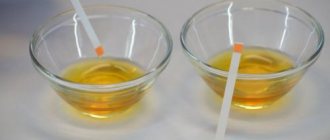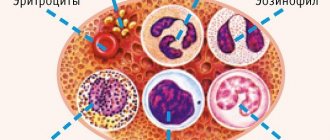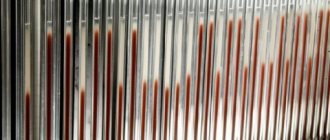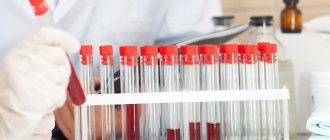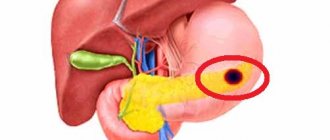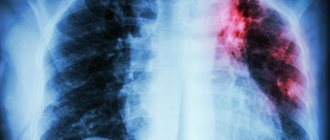Irritation and rashes on the skin, difficulty breathing, itching - all these are clear signs of an allergy. Allergy – literally translated from Latin as “another reaction” – is the body’s response to incoming irritants. The substance can enter the body through the skin, respiratory tract or through food.
An “irritant” that causes an allergy is not necessarily a harmful substance, it’s just that the body of a particular person cannot cope with it. Despite the fact that allergens are individual for each person, many years of experience have allowed doctors to compile a list of products to which in many cases a negative reaction occurs ( immunoglobulin E ).
It includes: citrus fruits, exotic fruits and vegetables, eggs, sea fish, milk, honey and spices, chocolate, dust, perfume and all cosmetics, chemical aerosols, pollen of trees and flowers. Allergic reactions can also occur to certain fabrics, animals (especially those with a lot of fur), upholstery and paint.
What is immunoglobulin E?
For a long time, the cause and mechanism of the allergic reaction were a question for scientists. In the mid-twentieth century, the term immunoglobulin E was first used in medical practice. This substance is constantly contained in small quantities in blood serum. In a person prone to allergic reactions, the amount of immunoglobulin E is constantly increased.
At the moment, the mechanism of inheritance is not reliably known, but, as practice shows, about 80 percent of allergic children are born to couples with a high level of immunoglobulin E in the blood and prone to allergies.
This substance is produced in the submucosal layer of tissue by beta lymphocytes - cells of the immune system - in response to a foreign agent entering the human body. At its core, immunoglobulin E is a protein substance. These antibodies are attached to the outer cell membrane of basophils or mast cells, where the synthesis of specialized biological active substances occurs that respond to the entry of a foreign agent.
Over time, doctors began to further subdivide immunoglobulin E into the first and second types. Immunoglobulin E is type 1 and appears in the body during an immediate allergic reaction. After this substance begins to come into contact with a foreign agent, an allergic reaction begins.
The reaction process occurs in two stages: early and delayed.
First of all, vascular permeability increases, involuntary muscle contractions occur, even convulsions are possible, and the work of the mucous glands accelerates. At this moment, the person begins to feel very thirsty, and a feeling of hunger may appear.
Then the human body instantly begins to produce hormones - serotonin and histamine. These substances activate the production of anti-inflammatory substances - prostaglandids, interleukins and others. They act locally on the affected tissue or organ, preventing the inflammatory process from developing or reducing its pathological properties. Due to this, allergy manifestations occur, such as rash, swelling and other clinical signs.
All properties of immunoglobulin E have not yet been studied, and the mechanism of its action is not completely clear. However, most scientists are of the opinion that this protein agent has antiparasitic and antiprotozoal effects, helps the human body cope with uninvited guests of internal organs and neutralizes their toxic effects.
Why is it prescribed and what does the immunoglobulin E test show?
A blood test for immunoglobulin E is prescribed very often. However, most medical professionals are of the opinion that the readings of immunoglobulin E alone will not give a complete picture of the state of the immune system and the doctor will not be able to identify the cause of the deviation.
The study is carried out using two main methods: a radioallergosorbent test and an enzyme-linked immunosorbent assay. The radioallergoadsorbent test shows the level of immunoglobulin when a certain allergen is added to the blood. If immunoglobulin E increases, the test is positive; if not, it is negative. Blood tests have a large margin of error and can only be effective in diagnosing allergies. The second method is recognized as much more accurate and modern.
An enzyme-linked immunosorbent assay determines the amount of immunoglobulin E in the blood using the antigen-antibody method, which allows us to consider the result of the study as reliable as possible.
Studying the amount of immunoglobulins in human blood serum is necessary for diagnosing: allergic reactions and infections, suspected damage to the body by parasites, bronchial asthma, hay fever, autoimmune and oncological diseases, diseases of unknown etiology and immunodeficiency. Also, the examination will need to be carried out when preparing the patient for surgery and after surgery, after transfusion of donor blood and its components, after suffering serious illnesses, as well as in newborns and children 1, 3 and 5 years old.
Types of hyper-IgE syndrome
The autosomal dominant form of hyper-syndrome, which manifests itself as a heterozygous mutation of the transcription factor STAT3, is the most common type. Its symptoms include respiratory infections and skin diseases, including urticaria in newborns, eczema, chronic ear abscesses, infections of the paranasal sinuses and lungs, which result in the destruction of internal cavities and the appearance of pneumatoceles (lung cysts).
Other manifestations of STAT3 deficiency include candidiasis affecting the skin and mucous membranes, thrush and nail candidiasis (onychomycosis). In addition, with this form, connective tissues are affected and characteristic lesions of the musculoskeletal system appear, which include the characteristic appearance of the patient's face, prominent joints, delayed teething and increased fragility of bones, which is manifested by the occurrence of repeated cracks and fractures even from small injuries
An autosomal recessive form with deficiency of the DOCK8 gene is common in countries where consanguineous marriages are practiced. Common manifestations of autosomal recessive hyper-IgE syndrome include eczema, skin diseases, persistent respiratory infections, candidiasis and other fungal infections.
How to get tested?
Preparing for an Ig E blood test does not require much effort. There are a few simple rules:
- Tests are taken in the morning; you must not eat or drink water before blood collection.
- Two days before the test, you need to exclude fatty, fried, salty and spicy foods from your diet.
- Eliminate allergens and spices the day before the test.
- The day before donating blood for analysis, you should not drink alcohol, smoke or use drugs.
- You cannot take medications, except for those that a person takes continuously for 14 days before blood sampling.
- You cannot take the test less than 24 hours after physiotherapeutic procedures, as well as an x-ray examination.
- More than two weeks must pass after returning from another country or city.
- You should avoid strenuous physical activity one or two days before the test.
Immunoglobulin E and its norm are very vague, therefore, for the reliability of the result, it is necessary to warn the attending physician or laboratory assistant about the presence of chronic diseases, pregnancy, the postpartum period, menstruation or the period of breastfeeding. It would also not be superfluous to donate blood for a general blood test.
Decoding indicators
When deciphering the resulting result, you should remember the individual characteristics of the body, standard of living, human work and other characteristics. In winter, the level of immunoglobulin E in a person’s blood will normally be lower than in summer. The maximum increase in values occurs in April-May and August-September. Low immunoglobulin E is more common among residents of northern regions than among residents of southern regions, and among residents of regions with high humidity the indicator is lower, and with dry air it is higher. However, studies show that if a person has lived all his life in a warm place and then moved to the north, then a sharp increase in indicators is possible.
Total immunoglobulin E is significantly elevated in workers of mines, sawmills, pharmaceutical and perfume companies, metallurgical and chemical production. There are many more factors that influence the normal content of immunoglobulin E, so only a doctor can give an accurate interpretation of the analysis.
Effect of hyper-IgE syndrome on the skin and lungs
Skin rashes, eczema and urticaria are the very first symptoms of hyper-immunoglobulin syndrome in newborns. What happens to the children? Purulent blisters usually appear in the first months of life in children. The very first areas affected are the scalp and face. Patients with DOCK8 are also susceptible to herpes and molluscum contagiosum.
Skin abscesses are classic symptoms of the syndrome. They increase susceptibility to staph infections. However, the degree of inflammatory reactions, such as redness and increased pain sensitivity, may vary from case to case. The term “cold abscess” is applied to these phenomena. This means that there is pus without inflammation, which is why the disease may not make itself felt for a long time until the capsule with pus breaks through and causes a non-healing abscess.
Persistent bacterial pneumonias are common in patients with autosomal dominant hyper-IgE syndrome . They also often have fungal infections of the lungs, especially Aspergillus fumigatus. As with cold abscesses, these types of pneumonia may present with few symptoms that occur in people with normal immune systems. This lack of symptoms can lead to silent progression of the disease and significant damage to body tissue.
Norms for adults
The norm of immunoglobulin E in a healthy adult over 18 years of age living in the middle zone is from 20 to 100 kE/liter in women and from 25 to 105 kE/liter in men. In pregnant women, the normal level of immunoglobulin E ranges from 15 to 125 kE/liter. From early April to mid-June and from early August to late September, standards for adults can range from 35 to 225 kE/liter. In people over 55 years of age, the norm of immunoglobulin E is from 15 to 80 kE/liter, in people over 65 years of age from 15 to 70 kE/liter, in people over 75 years of age from 10 to 50 kE/liter.
Each laboratory has its own markers, which are set based on the research methods used, the accuracy of the instruments and the difference in reagents. In this regard, only the laboratory receiving it can provide the most accurate standards of analysis.
Norms for the concentration of immunoglobulin E in the blood of children and adults
| Age | Index |
| 0-3 months | 0-2 |
| 3-6 months | 3-10 |
| 6-12 months | 8-20 |
| Up to a year | 0-29 |
| 1-2 years | 0-49 |
| 2-3 years | 0-45 |
| 4-5 years | 10-50 |
| 6-9 years | 0-52 |
| 10-15 years | 16-200 |
| 16-18 years old | 20-100 |
You should know that allergy tests are not informative for patients under 3 years of age. The reason is the lack of developed immunity. In other words, the child has not yet had time to try all types of food products characteristic of the region of his residence and strengthen the immune response to them. This statement is only suitable for cases with suspected food allergies.
Be careful - the interpretation of the analysis, which indicates an increased or low e-protein in the blood serum by 10 times, does not always correspond to the acceptable value for a particular age of the child. This means that this condition requires further study.
Blood testing should be carried out by an experienced specialist.
If the results of a blood test for the content of serum E-antibodies indicate that the norm for the patient’s specific age is not met, you should contact specialists for advice and treatment. In general, from the results of the study we can conclude:
- increased concentration is the body’s reaction to the allergen;
- decreased is a sign of a developing tumor or serious hereditary diseases in children.
An excess of IgE in the blood indicates disturbances in the functioning of the body due to:
- penetration of allergens;
- reactions to the composition of drugs;
- penetration and settlement of helminth colonies;
- viral infection of the body.
An increased indicator can indicate various diseases, which ones are determined by the attending physician.
The most likely diseases in this case will be:
- hives;
- hay fever;
- allergic rhinitis;
- atopic dermatitis;
- food, drug or pollen allergies;
- myeloma;
- bronchial asthma;
- helminthiasis;
- conjunctivitis, sinusitis or rhinitis;
- anaphylaxis;
- gastroenteropathy;
- angioedema;
- hyper-IgE syndrome.
Other reasons that caused an increase in E in the blood are:
- immunoglobulin A deficiency;
- parasites in the intestines;
- immunodeficiency diseases;
- purulent inflammation of the skin, malignant neoplasms on it.
For a patient of a particular age, they indicate the presence of:
- tumors of various types;
- hereditary hypogammaglobulinemia, when there is a deficiency of plasma cells;
- Louis-Bar syndrome;
- immunodeficiency diseases;
- ataxia.
There are specialized medical reference books for identifying diseases based on the results of a blood test for immunoglobulin IgE total immulite. Let us add in the form of a table some of its values that characterize a number of diseases.
| Disease | Concentration, kE/l |
| Asthma bronchial | 120-1200 |
| Atopic dermatitis | 80-14000 |
| Allergic runny nose | 120-1000 |
| Acute bronchopulmonary aspergillosis | 1000-8000 |
| Hyperimmunoglobulin E syndrome | 1000-14000 |
| Myeloma | More than 15000 |
In case of a genetic predisposition to the development of allergies or asthma, a test for serum immunoglobulin E is prescribed (the norm in children depends on their age). Determining the level of IgE in children is necessary in the following situations:
- any allergic manifestation;
- infectious disease;
- swelling, rash and itching on the skin;
- bronchial asthma;
- malignant formation;
- Quincke's edema;
- primary immunodeficiency;
- hay fever;
- conjunctivitis;
- infestation with worms;
- rhinitis;
- lymphogranulomatosis;
- chronic inflammatory disease.
The accuracy of the test for immunoglobulin type E ensures that certain conditions are met. Ignoring the recommendations will affect the reliability of the analysis and “blur” the picture of the disease as a whole. Preparation for analysis includes several important rules:
- for five days before the procedure, it is necessary to exclude foods that irritate the gastrointestinal mucosa (fried, fatty, sour, too salty foods);
- no later than 7 days before donating blood, stop taking medications, especially antibiotics and phenytoin (the latter underestimates the indicator);
- IgE testing is performed on an empty stomach;
- make sure that the baby does not overexert himself physically and emotionally on the eve of the analysis;
- if there is a need for an ultrasound of internal organs, it should be done a couple of days before donating blood;
- X-rays, fluorography, and physiotherapeutic procedures should not be done the day before.
A general analysis for immunoglobulin E allows you to determine the total values of antibodies in the baby’s plasma or serum. Reference values for total immunoglobulin E differ in children of different ages. As a child grows, the amount of antibodies in his body increases, while older people are characterized by low levels of IgE.
If there is no need to protect the body from an infection, virus or allergic reaction, immunoglobulin will not be detected in the blood. A table of normal IgE values depending on the age category of the patient will help you understand and decipher the values of the test result yourself.
| Child's age | Normal value, kE/l |
| 4–12 weeks | 0–2 |
| 3–6 months | 3–10 |
| 1–2 years | 8–20 |
| 2–5 years | 10–50 |
| 5–15 years | 15–60 |
| 15–18 years old | 20–100 |
Often, elevated immunoglobulin E in the blood is detected in children with hypersensitivity to a number of pollen and food allergens. If the child is allergic to one or a small number of pathogens, the level may deviate only slightly from the norm or even show a normal value. An elevated level of IgE shows results in the following allergic diseases:
- atopic dermatitis (8,014,000 kU/l);
- hay fever;
- angioedema;
- allergic rhinitis (120–1000 kU/l);
- hives;
- anaphylactic condition;
- bronchitis (120–1200 kU/l);
- bronchopulmonary aspergillosis;
- allergic asthma (120–1200 kU/l);
- contact dermatitis;
- gastroenteropathy;
- Lyell's syndrome.
It is worth considering that an excess of immunoglobulin class E is not a sufficient indicator for making a diagnosis of “allergy”. A search for specific antibodies to more than 600 different allergens is carried out and the research results are compared by a qualified doctor. Since increased coefficients are typical not only for contact with an allergen, but also for other ailments, a specialist needs to draw up a clinical picture by studying the existing symptoms.
After identifying the pathogen, the doctor will prescribe treatment to reduce the body's sensitivity to it. Tablets and various ointments for dermatitis help reduce it.
An excessive amount of antibodies may not be a consequence of an allergic reaction in a child. In the absence of its signs, the following diseases are considered:
- Neumann's syndrome;
- myeloma (more than 15,000 kU/l);
- immunopathological disease;
- infection with worms;
- DiGeorge syndrome;
- periarteritis nodosa;
- thymic aplasia;
- Wiskott-Aldrich syndrome;
- hyper-IgE syndrome.
In adults, the concentration of total immunoglobulin E in the blood plasma is very low. After 18 years, the level of immunoglobulin E is considered normal to be in the range of 0-100 IU/ml of blood. The concentration of immunoglobulin E varies depending on the time of year. In May, when plants bloom, it is maximum and can reach 250 IU/ml of blood. This is not a sign of pathology. In December, most people have minimal levels of immunoglobulin E.
The norm of total immunoglobulin E in children changes dynamically with age and differs from the indicators of an adult. In children under one year of age, the immunoglobulin concentration normally does not exceed 29 IU/ml, from 1 to 2 years of age - 45 IU/ml, from 3 to 9 years - 53 IU/ml and from 9 to 15 years is in the range of 0-200 IU /ml.
From the first day of a child’s life until the age of fifteen, the level of immunoglobulin E gradually increases. Closer to puberty, normal values are finally established and do not change over the years. A decrease in the number of class E antibodies in older people is normal.
The normal concentration of immunoglobulin IgE in newborns is considered to be up to 1.5 IU/ml, in children 1-5 years old - up to 60.0 IU/ml, 6-9 years old - up to 90.0 IU/ml, 10-15 years old - up to 200 .0 IU/ml. Normally, the level of immunoglobulin IgE does not exceed 100.0 IU/ml. Total immunoglobulin e IgE may be high in patients receiving penicillin antibacterial drugs, but decreased when taking phenytoin.
An increase in the level of immunoglobulin IgE is observed in patients suffering from atopic allergic diseases (allergic rhinitis, atopic bronchial asthma, atopic dermatitis, allergic gastroenteropathy). Immunoglobulin IgE may be high in patients with the following diseases:
- anaphylactic reactions (systemic anaphylaxis, angioedema);
- allergic bronchopulmonary aspergillosis;
- helminthiasis;
- hyper-IgE syndrome (Job syndrome);
- Wiskott-Aldrich syndrome;
- selective IGA deficiency;
- thymic aplasia (DiGeorge syndrome);
- IgE myeloma.
The concentration of immunoglobulin Ig e increases in the case of graft-versus-host disease. A decrease in the level of immunoglobulin IgE may indicate a significant deterioration in the function of the immune system, the presence of immunodeficiency or myeloma.
Make an appointment with an immunologist at the Yusupov Hospital by calling. The doctor will conduct an examination and prescribe an IgE immunoglobulin test. After discussing the results of the study, treatment will be prescribed.
The norm of immunoglobulin E in a healthy adult over 18 years of age living in the middle zone is from 20 to 100 kE/liter in women and from 25 to 105 kE/liter in men. In pregnant women, the normal level of immunoglobulin E ranges from 15 to 125 kE/liter. From early April to mid-June and from early August to late September, standards for adults can range from 35 to 225 kE/liter.
Each laboratory has its own markers, which are set based on the research methods used, the accuracy of the instruments and the difference in reagents. In this regard, only the laboratory receiving it can provide the most accurate standards of analysis.
| Child's age. | Immunoglobulin content in blood serum. |
| Newborn | 0-1 kE/liter |
| 1 - 2 months | 0-2 kE/liter |
| 3 – 6 months | 3-10 kE/liter |
| 7 – 12 months | 8-15 kE/liter |
| 1 - 2 years | 10-20 kE/liter |
| 25 years | 10-50 kE/liter |
| 5 – 12 years | 15-50 kE/liter |
| 12 - 15 years old (girls) | 30-90 kE/liter |
| 12 – 15 years old (boys) | 25-80 kE/liter |
| 15 - 18 years old | 20-100 kU/liter |
Norms for children
| Child's age. | Immunoglobulin content in blood serum. |
| Newborn | 0-1 kE/liter |
| 1 - 2 months | 0-2 kE/liter |
| 3 – 6 months | 3-10 kE/liter |
| 7 – 12 months | 8-15 kE/liter |
| 1 - 2 years | 10-20 kE/liter |
| 25 years | 10-50 kE/liter |
| 5 – 12 years | 15-50 kE/liter |
| 12 - 15 years old (girls) | 30-90 kE/liter |
| 12 – 15 years old (boys) | 25-80 kE/liter |
| 15 - 18 years old | 20-100 kU/liter |
It should be noted that the analysis for immunoglobulin E in children of the first year of life who are bottle-fed is normally 2 units higher than that of their peers receiving breast milk. It must be borne in mind that every time a new product is introduced into the diet of an infant, antibodies are released - the level of immunoglobulin E first increases and then returns to normal. In children born prematurely or with serious birth injuries, only the attending physician can adequately assess the normal level of immunoglobulin E based on the child’s age.
The structure of immunoglobulin
Immunoglobulin E has the same structure as other antibodies. It consists of two light (kappa - k or lambda - l) and two heavy (epsilon - e) chains. They are arranged in the form of a slingshot, where they distinguish two Fab sites - the sites where the antibody binds to the antigen, and one Fc site that interacts with the receptor, which is located on the surface of cells or certain proteins.
The main feature in the structure of various classes of immunoglobulins is the heavy H-chains. Immunoglobulins are named after the type of these chains: IgM - μ, IgG - γ, IgA - α, IgE - ε, IgD - δ.
What to do if the level of immunoglobulin E is elevated?
High levels of immunoglobulin in a person’s blood indicate the development of some inflammatory or non-inflammatory pathological process. The main reasons are: allergies, food and drug poisoning, parasites (worms, helminths, roundworms and others), benign and malignant tumors, dermatitis, autoimmune diseases. To identify the cause of a patient’s illness, one test for immunogobulin E is not enough; additional examinations should be carried out based on the person’s complaints and accompanying symptoms.
It should be noted that a decrease in the level of immunoglobulin E in human blood is not a good sign. This may be a consequence of genetic pathologies or cancer. Particular attention should be paid to the decrease in immunoglobulin E in children in the first five years of life.
Algorithm of action in case of abnormal immunoglobulin E:
- Calm down and analyze life before analysis. Note whether you had to deal with stress or eat exotic foods; perhaps there were other factors that influenced the result.
- If possible, retake the analysis in another laboratory. Particular care should be taken in preparation.
- If the result again leaves much to be desired, you should definitely contact an immunologist to prescribe treatment.
Drug treatment of elevated immunoglobulin E
It should be understood that an increased level of immunoglobulin E in the blood serum is not a disease, but a symptom of the disease. And it is not the increased indicator that should be treated, but the cause of its increase should be gotten rid of. Self-medication in this case is very dangerous; only a doctor can choose the right medicine.
- If immunoglobulin E levels are very elevated (more than 300 kE/liter), the patient is first prescribed IVs. The most commonly used solutions are sodium chloride, potassium chloride and disol. Sometimes they are administered together with glucose and vitamins.
- To stimulate and restore the normal functioning of the human immune system, drugs such as Arbidol, Viferon, Immunil are prescribed.
- An increased level of immunoglobulin E is often caused by an infection, in which case the patient is prescribed specific antibacterial treatment with antibiotics.
- If a parasitic lesion of the body has been identified, drugs for treatment are prescribed - Pirantel, Decaris, Vermox, depending on the type of parasites. In parallel with these medications, it is necessary to take means to populate favorable microflora in the intestines - these are Linex, Bifiform, Biobakton and others.
- If an increase in immunoglobulin E in the blood was a sign of an allergic reaction, then the patient is prescribed antihistamines. These are Suprastin, Khifenadine, Clemaxin, Diphenhydramine, Zodak and others. Usually, at the same time, the doctor prescribes intestinal adsorbents: activated carbon, Polysorb, Enterosgel and others.
- An increase in the level of immunoglobulin E in the blood often causes irritation on the skin. Local medications will help here. Necessary drugs: Fenistil gel, Bepanten, Zinc ointment, Streptocide, Eplant. For severe skin damage and scarring, Contractubex, Troxevasin and Heparin ointment can help.
What does an increased level of immunoglobulin E indicate?
The test for total immunoglobulin E is a determination of the total concentration of protective proteins in the blood serum. Doctors at the Yusupov Hospital prescribe a blood test for immunoglobulin E for atopic diseases: bronchial asthma, atopic dermatitis, urticaria. Immunoglobulin E is responsible for the immune response to the penetration of parasites into the body - roundworm, trichinella, toxoplasma.
Immunologists at the Yusupov Hospital prescribe a blood test for immunoglobulin E if a patient has itchy skin, skin rashes, or redness that has appeared within 24 hours.
The level of immunoglobulin E is determined in the presence of the following diseases:
- bronchitis;
- Quincke's edema;
- hay fever;
- rhinitis.
A study of the level of immunoglobulin E is carried out to assess the risk of developing allergies in children, to study and assess the state of the immune system as a whole, and to diagnose helminthic infestations. The results of the analysis are necessary for the differential diagnosis of all allergic reactions that have similar symptoms. They are taken into account when individually selecting treatment tactics for pulmonary aspergillosis (a disease caused by a moldy fungus of the genus Aspergillosis).
Immunologists at the Yusupov Hospital monitor the effectiveness of treatment for allergic diseases using immunoglobulin E analysis. The study is necessary to diagnose individual conditions associated with immunodeficiency, determine the type and degree of sensitization to a specific allergen.
When allergens penetrate the body, antibodies are produced against them, which leads to an increase in the level of immunoglobulins E. A high concentration of immunoglobulins E in the blood serum may indicate atopic diseases (dermatitis, bronchial asthma, rhinitis, allergic gastroenteropathy). A sharp increase in the level of immunoglobulin E is observed in anaphylactic diseases - urticaria (angioedema) and systemic anaphylaxis. Allergies can be triggered by the following factors:
- dust;
- foreign protein;
- Food;
- plant pollen;
- medications;
- substances of chemical origin;
- metal derivatives.
In this regard, in the presence of elevated levels of immunoglobulin E, immunologists at the Yusupov Hospital conduct tests with more than six hundred allergens.
Exceeding the norm of total immunoglobulin E is also possible due to defects in T-lymphocytes, which are responsible for the strength and duration of the immune response. In this case, a high level of immunoglobulin E may be evidence of the following diseases:
- hyperimmunoglobulinemia;
- thymic aplasia;
- deficiency of selective IgA protein;
- congenital immunodeficiency (eczema, thrombocytopenia);
- myeloma IgE.
Another reason for the increased amount of total immunoglobulins is the conflict between host and donor cells after tissue transplantation. In this case, the transplanted cells perceive the new organism as a threatening factor and attack it.
In bronchial asthma, the level of immunoglobulins E can range from 120 to 1200 IU/ml, in allergic rhinitis - from 120 to 100 IU/ml, in patients suffering from immunoglobulin - 1000-1400 IU/ml. In IgE myeloma, the concentration of immunoglobulins E exceeds 15,000 IU/ml; in atopic dermatitis, it is in the range of 80-14,000 IU/ml.
Currently, there are no drugs that directly lower the concentration of immunoglobulin E in the blood. The basis for lowering serum immunoglobulin levels is the elimination of the allergen that caused a negative reaction from the immune system. After establishing an accurate diagnosis, immunologists at the Yusupov Hospital prescribe drug therapy.
This includes antihistamines. Antiallergic drugs suppress the functioning of those receptors that react to the immediate allergen. Skin care ointments and creams help eliminate external symptoms of the disease.
For patients with immunoglobulin-dependent allergies, immunity is increased by gradually increasing the doses of allergens that are introduced into the body. This allows for a long-term lull in allergic manifestations. If there are parasites in the body, anthelmintics are prescribed.
Make an appointment with an immunologist by calling the clinic. The contact center of the Yusupov Hospital is open 24 hours a day, 7 days a week. After the examination, the doctor will prescribe a blood test for the content of immunoglobulin E, conduct tests with allergens, establish an accurate diagnosis and prescribe treatment.
Exposure to allergens provokes a sharp increase in IgE and indicates pathologies such as:
- inflammatory skin lesions;
- bronchial asthma;
- allergic rhinitis;
- allergic gastroenteritis;
- urticaria and Quincke's edema;
- anaphylactoid reactions.
Immunoglobulin E - types of analysis
The strongest allergens, due to which an increase in IgE is noticeable in the analysis:
- dust mites;
- preservatives;
- foreign protein;
- pollen grains of highly allergenic plants;
- metal alloys;
- toxins.
What is immunoglobulin E responsible for?
The protein content in the blood plasma increases due to T-cell dysfunction. If the antibody content in the analysis increases, this indicates the following conditions:
- hyper-IgE syndrome;
- selective immunoglobulin A deficiency;
- underdevelopment of the thymus;
- myeloma - uncontrolled proliferation of white blood cells;
- primary (congenital) immunological deficiency - reduced platelet levels in the blood, eczema rash and other pathologies.
| IgE content, IU/ml | Decoding (when such indicators occur) |
| 120 — 1200 | bronchial asthma |
| 120 — 1000 | runny nose of allergic nature |
| 1000 — 14000 | underdevelopment of the thymus |
| above 15000 | multiple myeloma |
| 80 — 14000 | atopic dermatitis |
To reduce the concentration of serum IgE, complex treatment is prescribed, including taking medications - orally and locally and traditional medicine.
Low immunoglobulin type E, unlike high immunoglobulin, is less common. In such cases, consultation with several specialists is often required - an allergist, an otolaryngologist, an infectious disease specialist and an immunologist. An underestimated rate is observed in the following diseases:
- immunodeficiency;
- Louis-Bar syndrome;
- tumor;
- hereditary hypogammaglobulinemia;
- myeloma is not IgE.
High levels of immunoglobulin in a person’s blood indicate the development of some inflammatory or non-inflammatory pathological process. The main reasons are: allergies, food and drug poisoning, parasites (worms, helminths, roundworms and others), benign and malignant tumors, dermatitis, autoimmune diseases.
It should be noted that a decrease in the level of immunoglobulin E in human blood is not a good sign. This may be a consequence of genetic pathologies or cancer. Particular attention should be paid to the decrease in immunoglobulin E in children in the first five years of life.
Algorithm of action in case of abnormal immunoglobulin E:
- Calm down and analyze life before analysis. Note whether you had to deal with stress or eat exotic foods; perhaps there were other factors that influenced the result.
- If possible, retake the analysis in another laboratory. Particular care should be taken in preparation.
- If the result again leaves much to be desired, you should definitely contact an immunologist to prescribe treatment.
It should be understood that an increased level of immunoglobulin E in the blood serum is not a disease, but a symptom of the disease. And it is not the increased indicator that should be treated, but the cause of its increase should be gotten rid of. Self-medication in this case is very dangerous; only a doctor can choose the right medicine.
- If immunoglobulin E levels are very elevated (more than 300 kE/liter), the patient is first prescribed IVs. The most commonly used solutions are sodium chloride, potassium chloride and disol. Sometimes they are administered together with glucose and vitamins.
- To stimulate and restore the normal functioning of the human immune system, drugs such as Arbidol, Viferon, Immunil are prescribed.
- An increased level of immunoglobulin E is often caused by an infection, in which case the patient is prescribed specific antibacterial treatment with antibiotics.
- If a parasitic lesion of the body has been identified, drugs for treatment are prescribed - Pirantel, Decaris, Vermox, depending on the type of parasites. In parallel with these medications, it is necessary to take means to populate favorable microflora in the intestines - these are Linex, Bifiform, Biobakton and others.
- If an increase in immunoglobulin E in the blood was a sign of an allergic reaction, then the patient is prescribed antihistamines. These are Suprastin, Khifenadine, Clemaxin, Diphenhydramine, Zodak and others. Usually, at the same time, the doctor prescribes intestinal adsorbents: activated carbon, Polysorb, Enterosgel and others.
- An increase in the level of immunoglobulin E in the blood often causes irritation on the skin. Local medications will help here. Necessary drugs: Fenistil gel, Bepanten, Zinc ointment, Streptocide, Eplant. For severe skin damage and scarring, Contractubex, Troxevasin and Heparin ointment can help.
The experience of past generations has helped to create many traditional medicines to lower the level of immunoglobulin E in human blood.
- Garlic decoction. Finely chop or crush a few cloves of garlic, add to boiling water and simmer over low heat for 15-20 minutes. Take the decoction one glass 3-4 times a day before meals. This remedy helps well in the complex treatment of parasites.
- Onion water. Wash one large onion well (do not peel!), cut into several pieces and place in boiling water. Cook over low heat for half an hour. You should take one glass of the decoction at night. Two hours before your appointment, you should not eat anything. This remedy perfectly expels parasites from the body. Can be taken in combination with garlic decoction.
- Echinacea. Pour one teaspoon or one filter bag into a glass of hot, but not boiling water. Let brew for 15-20 minutes, take 2-3 times a day. It is permissible to add sugar to herbal tea. Echinacea is a natural immunomodulator and helps well in combination with treatment.
- Lemon water. Rinse the lemon well and grind in a blender or finely chop. Pour boiling water over it and add a few mint leaves. Take 2 glasses of decoction in the morning and throughout the day twenty minutes before meals. This decoction is good for removing waste and toxins from the human body, can help with parasites, and also has a general strengthening and immunomodulatory effect. However, it should be remembered that this remedy cannot be used if there is a suspicion of an allergy.
- Fenugreek decoction. Bring a liter of milk to a boil and boil for three minutes. Reduce heat and add 2 tablespoons of fenugreek seeds to the milk. Cook over low heat, stirring slightly, for 10 minutes. Do not bring to a boil under any circumstances. Take one glass before meals 3-4 times a day. This traditional medicine is excellent in the complex treatment of infectious diseases (with the exception of intestinal infections). Fenugreek decoction can also help in complex antiallergic therapy (except in cases where the patient is allergic to milk protein). This product removes waste and toxins from the body, and also has immunomodulatory properties.
- Linden blossom. Pour two tablespoons of linden flowers with hot, but not boiling water. Let it brew for 15-20 minutes. Take the decoction with meals 3-5 times a day. Linden blossom has a beneficial effect on the functioning of the immune system, and also helps well in the complex treatment of infectious diseases. This remedy should not be taken if the patient is allergic to linden blossom or pollen.
- Oat decoction. Pour boiling water over five tablespoons of unpeeled oats and cook for 15 minutes. Pour the broth into a thermos and leave overnight (at least 6-7 hours). The infusion should turn out jelly-like. Take 2 cups of oats in the morning and 1 cup before meals throughout the day. This product removes waste and toxins from the body well. At the same time, oat decoction helps in the comprehensive fight against parasites. It has a beneficial effect on the intestines and its functions, helping to restore normal microflora. Oats also have antiallergic properties and can be used in the treatment of allergies. Allergy to oats is extremely rare.
- Dandelion root. Grind the dandelion root and dry it in a dry frying pan until a nutty smell appears. Then put it in a pot, ladle or coffee maker and prepare it like coffee. Take a tasty drink 3-4 times a day during meals. If there are no contraindications, add sugar or any other sweetener. A decoction of dandelion roots has antitoxic properties and can be used in complex control of parasites. It has a general strengthening effect on the body as a whole and can help cope with the infection more quickly. There are practically no allergies to dandelion root.
- Celandine. Pour celandine herb with hot, but not boiling water. Let the broth brew for half an hour. Soak a cotton swab, napkin or bandage in the solution and apply to clean skin affected by allergies. There is no need to wash off the broth. Celandine relieves inflammation, and also softens the skin and cleanses pores. You can use the product up to five times a day.
- Chamomile and St. John's wort. Take chamomile and St. John's wort herbs in equal quantities. Pour in hot but not boiling water. Take half a glass three times a day before meals. Helps in the complex treatment of allergies and has general strengthening properties.
Birch buds
- For skin. Pour a tablespoon of birch buds into a glass of boiling water. Let it brew for 15-20 minutes, and then apply with a cotton swab to the affected areas of the skin. This remedy will quickly relieve swelling and inflammation, and also help soften the skin and speed up the healing of wounds.
- For oral administration. Pass the birch buds through a meat grinder or grind in a blender. After this, cook in a pot or ladle, like coffee. Take a tasty decoction three to four times during the day. This will help quickly remove uninvited guests-parasites from the intestines. Also, a decoction of birch buds has a general strengthening effect, has a beneficial effect on the immune system and helps cope with internal inflammatory processes and infectious diseases. There are practically no allergies to this drug.
How to lower the level using folk remedies
The experience of past generations has helped to create many traditional medicines to lower the level of immunoglobulin E in human blood.
- Garlic decoction. Finely chop or crush a few cloves of garlic, add to boiling water and simmer over low heat for 15-20 minutes. Take the decoction one glass 3-4 times a day before meals. This remedy helps well in the complex treatment of parasites.
- Onion water. Wash one large onion well (do not peel!), cut into several pieces and place in boiling water. Cook over low heat for half an hour. You should take one glass of the decoction at night. Two hours before your appointment, you should not eat anything. This remedy perfectly expels parasites from the body. Can be taken in combination with garlic decoction.
- Echinacea. Pour one teaspoon or one filter bag into a glass of hot, but not boiling water. Let brew for 15-20 minutes, take 2-3 times a day. It is permissible to add sugar to herbal tea. Echinacea is a natural immunomodulator and helps well in combination with treatment.
- Lemon water. Rinse the lemon well and grind in a blender or finely chop. Pour boiling water over it and add a few mint leaves. Take 2 glasses of decoction in the morning and throughout the day twenty minutes before meals. This decoction is good for removing waste and toxins from the human body, can help with parasites, and also has a general strengthening and immunomodulatory effect. However, it should be remembered that this remedy cannot be used if there is a suspicion of an allergy.
- Fenugreek decoction. Bring a liter of milk to a boil and boil for three minutes. Reduce heat and add 2 tablespoons of fenugreek seeds to the milk. Cook over low heat, stirring slightly, for 10 minutes. Do not bring to a boil under any circumstances. Take one glass before meals 3-4 times a day. This traditional medicine is excellent in the complex treatment of infectious diseases (with the exception of intestinal infections). Fenugreek decoction can also help in complex antiallergic therapy (except in cases where the patient is allergic to milk protein). This product removes waste and toxins from the body, and also has immunomodulatory properties.

